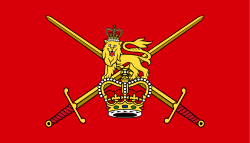 |
| British Army lists |
|---|
| French Revolutionary and Napoleonic Wars |
| Victorian era |
| First World War |
| Second World War |
| Regiments |
| Officers |
| Other |
This is a list of nicknames of regiments of the British Army. Many nicknames were used by successor regiments (following renaming or amalgamation).
Contents
The Bolt Heads was a nickname for the Gloucester Regiment because of their unique front and back badge on their berets.